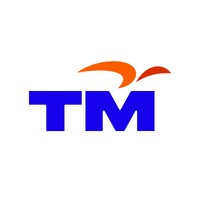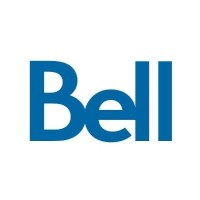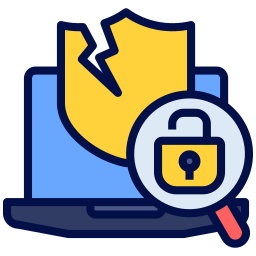
Telekom Malaysia Company Cyber Security Posture
tm.com.myTM is the national connectivity and digital infrastructure provider and Malaysia’s leading integrated telco; offering a comprehensive suite of communication services and solutions in fixed (telephony and broadband), mobility, content, WiFi, ICT, Cloud and smart services. TM is driven by stakeholder value creation in a highly competitive environment and places, emphasis on delivering an enhanced customer experience via continuous customer service quality improvements and innovations, whilst focusing on increased operational efficiency and productivity. As the enabler of the nation’s Digital Malaysia aspiration, TM has been at the forefront of every telecommunications technology evolution in the country and will continue to do so. It provides the communications backbone of Malaysia with the widest connectivity and convergence network. TM remains committed to expanding its network with a comprehensive digital infrastructure. Moving beyond connectivity services, TM is developing new value-added digital services to cater to a more digital lifestyle and society, digital businesses, and digital government, striving to make “Life and Business Easier, for a better Malaysia.” For further information on TM, visit www.tm.com.my. . SSM: 128740-P
Telekom Malaysia Company Details
telekom-malaysia
10974 employees
240652.0
517
Telecommunications
tm.com.my
Scan still pending
TEL_4618838
In-progress
Between 900 and 1000
This score is AI-generated and less favored by cyber insurers, who prefer the TPRM score.
 Telekom Malaysia Global Score
Telekom Malaysia Global Score.png)

Telekom Malaysia Company Scoring based on AI Models
| Model Name | Date | Description | Current Score Difference | Score |
|---|---|---|---|---|
| AVERAGE-Industry | 03-12-2025 | This score represents the average cybersecurity rating of companies already scanned within the same industry. It provides a benchmark to compare an individual company's security posture against its industry peers. | N/A | Between 900 and 1000 |
Telekom Malaysia Company Cyber Security News & History
| Entity | Type | Severity | Impact | Seen | Url ID | Details | View |
|---|---|---|---|---|---|---|---|
| Telekom Malaysia | Data Leak | 50 | 1 | 12/2022 | TEL2151311222 | Link | |
Rankiteo Explanation : Attack without any consequencesDescription: Telekom Malaysia Bhd (TM) said its 250,248 Unifi Mobile customers were affected by a data breach on Dec 28. The breach comprised both Unifi Mobile’s individual customers as well as small and medium enterprises (SMEs). The data involved in the breach included customer names, phone numbers and emails. | |||||||
Telekom Malaysia Company Subsidiaries

TM is the national connectivity and digital infrastructure provider and Malaysia’s leading integrated telco; offering a comprehensive suite of communication services and solutions in fixed (telephony and broadband), mobility, content, WiFi, ICT, Cloud and smart services. TM is driven by stakeholder value creation in a highly competitive environment and places, emphasis on delivering an enhanced customer experience via continuous customer service quality improvements and innovations, whilst focusing on increased operational efficiency and productivity. As the enabler of the nation’s Digital Malaysia aspiration, TM has been at the forefront of every telecommunications technology evolution in the country and will continue to do so. It provides the communications backbone of Malaysia with the widest connectivity and convergence network. TM remains committed to expanding its network with a comprehensive digital infrastructure. Moving beyond connectivity services, TM is developing new value-added digital services to cater to a more digital lifestyle and society, digital businesses, and digital government, striving to make “Life and Business Easier, for a better Malaysia.” For further information on TM, visit www.tm.com.my. . SSM: 128740-P
Access Data Using Our API

Get company history
.png)
Telekom Malaysia Cyber Security News
Telekom Malaysia out of DNB as it fails to get shareholder approval
Malaysian 5G wholesale operator in Digital Nasional Bhd (DNB) said on Friday that Telekom Malaysia's share subscription agreement (SSA) to ...
Malaysian telco provider has data breach – again
Share this story: Tags: cybersecurity · data breach · malaysia. Categories:: Applications · Data · Enterprise · Innovation
Hacker alleges to have stolen Telekom Malaysia’s customer database with ‘nearly 20 million effective user data’ (Updated with TM’s statement)
PETALING JAYA: A user on a notorious forum known for trading information obtained from data breaches alleged that he has stolen the complete ...
#BreakTheBias: Women in Cybersecurity
This year's International Women's Day is themed #BreaktheBias – shining a spotlight on valuing and celebrating individual differences.
Malaysia’s Cyber Security Bill 2024: A Game-Changer in Digital Defense
While Malaysia is actively investing in cybersecurity measures, it still faces significant challenges, as evidenced by recently recorded ...
U.S. Telecom, Zero-Day Attacks Highlight Cyber Hygiene Need
One issue has become increasingly clear: Good cyber hygiene could have limited damage from many of the attacks.
TM and Perodua partner to advance Malaysia’s automotive sector
TM and Perodua partner to advance Malaysia's automotive sector · Partnership aligns with New Industrial Master Plan 2030 goals · Collaboration ...
Telekom Malaysia alerts Unifi customers of data breach
Telekom Malaysia (TM) has alerted Unifi customers that a data breach may have affected some of their customers. According to local reports, ...
What’s going on with cyber security in Malaysia?
iPay88, a well-known payment gateway, suffered a cyberattack that mainly impacted online card data transactions. The intrusion, attributed to a ...

Telekom Malaysia Similar Companies

Bell
Bell is Canada's largest communications company providing advanced Bell broadband wireless, Internet, TV, media and business communications services. Founded in Montréal in 1880, Bell is wholly owned by BCE Inc. To learn more, please visit Bell.ca or BCE.ca Through Bell for Better, we are investin

Telkom Business
Telkom Business is the business unit dedicated to serving businesses of every type, industry and size in and outside South Africa. The businesses that we serve range from small and medium enterprises (SMEs) to large corporations, government organisations and global enterprises. A sub-brand of the

Globe Telecom
Globe is a leading full-service telecommunications company in the Philippines and publicly listed in the PSE with the stock symbol GLO. The company serves the telecommunications and technology needs of consumers and businesses across an entire suite of products and services including mobile, fixed,

Safaricom PLC
Safaricom is the leading provider of converged communication solutions in Kenya. In addition to providing a broad range of first-class products and services for Telephony, Broadband Internet and Financial services, Safaricom seeks to uplift the welfare of Kenyans through value-added services and sup

Vivo (Telefônica Brasil)
Vivo (Telefônica Brasil) is part of the Telefónica Group and with more than 94 million customers, of which 75 million mobile and 19 million fixed, we are the largest telecommunications company in Brazil, with nationwide presence and a complete, convergent portfolio of products, combining fixed, mobi

TDC Song
TDC Song has been part of TDC Group since year 2004. Company's name was changed into TDC in all Nordic countries in 2008. Please see www.tdc.com, www.tdc.se, www.tdc.fi and www.tdc.no. The story of TDC has been termed by many as a true business adventure that started small with only 22 subscribe

Frequently Asked Questions
Explore insights on cybersecurity incidents, risk posture, and Rankiteo's assessments.
Telekom Malaysia CyberSecurity History Information
How many cyber incidents has Telekom Malaysia faced?
Total Incidents: According to Rankiteo, Telekom Malaysia has faced 1 incident in the past.
What types of cybersecurity incidents have occurred at Telekom Malaysia?
Incident Types: The types of cybersecurity incidents that have occurred incident Data Leak.
Incident Details
Can you provide details on each incident?

Incident : Data Breach
Title: Unifi Mobile Data Breach
Description: Telekom Malaysia Bhd (TM) reported a data breach affecting 250,248 Unifi Mobile customers, including individuals and SMEs. The compromised data included customer names, phone numbers, and emails.
Date Detected: 2023-12-28
Type: Data Breach
What are the most common types of attacks the company has faced?
Common Attack Types: The most common types of attacks the company has faced is Data Leak.
Impact of the Incidents
What was the impact of each incident?

Incident : Data Breach TEL2151311222
Data Compromised: customer names, phone numbers, emails
What types of data are most commonly compromised in incidents?
Commonly Compromised Data Types: The types of data most commonly compromised in incidents are PII.
Which entities were affected by each incident?

Incident : Data Breach TEL2151311222
Entity Type: Telecommunications Company
Industry: Telecommunications
Location: Malaysia
Customers Affected: 250248
Data Breach Information
What type of data was compromised in each breach?

Incident : Data Breach TEL2151311222
Type of Data Compromised: PII
Number of Records Exposed: 250248
Sensitivity of Data: Medium
Personally Identifiable Information: customer names, phone numbers, emails
Additional Questions
Incident Details
What was the most recent incident detected?
Most Recent Incident Detected: The most recent incident detected was on 2023-12-28.
Impact of the Incidents
What was the most significant data compromised in an incident?
Most Significant Data Compromised: The most significant data compromised in an incident were customer names, phone numbers and emails.
Data Breach Information
What was the most sensitive data compromised in a breach?
Most Sensitive Data Compromised: The most sensitive data compromised in a breach were customer names, phone numbers and emails.
What was the number of records exposed in the most significant breach?
Number of Records Exposed in Most Significant Breach: The number of records exposed in the most significant breach was 498.0.
What Do We Measure?
















Every week, Rankiteo analyzes billions of signals to give organizations a sharper, faster view of emerging risks. With deeper, more actionable intelligence at their fingertips, security teams can outpace threat actors, respond instantly to Zero-Day attacks, and dramatically shrink their risk exposure window.
These are some of the factors we use to calculate the overall score:
Identify exposed access points, detect misconfigured SSL certificates, and uncover vulnerabilities across the network infrastructure.
Gain visibility into the software components used within an organization to detect vulnerabilities, manage risk, and ensure supply chain security.
Monitor and manage all IT assets and their configurations to ensure accurate, real-time visibility across the company's technology environment.
Leverage real-time insights on active threats, malware campaigns, and emerging vulnerabilities to proactively defend against evolving cyberattacks.




